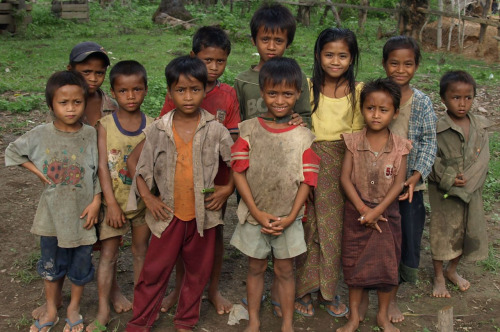Reducing the numbers of underweight and stunted children has fallen short of the targets set, despite the efforts undertaken to pursue the targeted plan, a recent government report has showed.
The number of underweight children less than five years of age has fallen to 25.5 percent of the total children nationwide, which failed to meet the targeted plan of 22 percent as approved by the National Assembly (NA). The findings were detailed in a report on the implementation of the socio-economic development plan over the first 10 months of the 2015-2016 fiscal year.
Presenting the report to the recent NA ordinary session, Minister of Planning and Investment, Dr Souphanh Keomixay told the parliament that efforts to reduce stunted children also fell short of the target.
Stunted children under five years of age (children who suffered chronic malnutrition) represented 35.6 percent, failing to meet the target of 34 percent as approved by the NA.
In an effort to reduce number of underweight and stunted children further, the government has set a target to reduce underweight children aged under five years from the current 25.5 percent to 22 percent by 2017.
A target has also been set to reduce the number of stunted children under five years of age (children who suffered chronic malnutrition) from the current 35.6 percent to 35 percent.
In addition, poverty reduction has also progressed at a slower pace but the government will strive to reduce the number of poor families from 6.56 percent in 2016 down to 6.09 percent by 2017.
There are several reasons contributing to slower poverty alleviation including the fact that most of the remaining poor families are located in remote hardship areas making it hard to introduce poverty-fighting programmes.
Meanwhile, Lao gross domestic product (GDP) registered smaller growth of only 6.9 percent in the 2015-2016 fiscal year, which was lower than the 7.5 percent recorded in the 2014-2015 fiscal year.
Laos appears set to register lower growth in the coming years as it has revised annual average GDP growth from the previous 7.5 percent to 7.2 percent over the next four years until 2020.
However, the government has made sound progress in a number of areas, notably in the social and cultural aspects, according to Dr Souphanh.
The healthcare service network has been improved and expanded. The number of people accessing clean water has reached as high as 89.2 percent of the total population, exceeding the plan of only 85 percent as approved by the NA.
Primary school enrolment has increased from 97.2 percent to 97.9 percent, while the dropout rate in primary schools has declined from 5.2 percent to 4.9 percent.
Source: Vientiane Times



